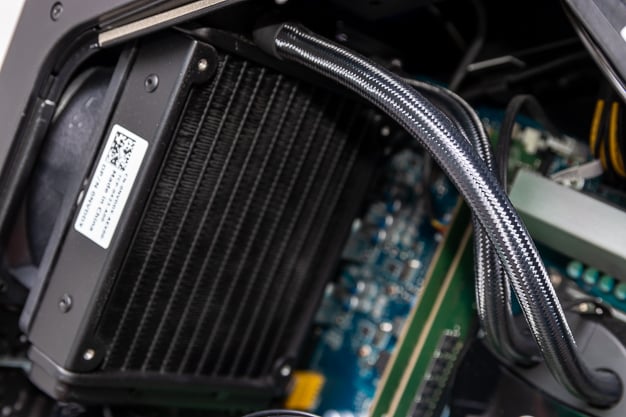Alienware Area-51 R5 (2018) Review: Liquid Cooled GPUs, Skylake-X Firepower
Total System Power Consumption
Our goal was to give you an idea of how much power each configuration used while idling and also while under a heavy workload. Please keep in mind that we were testing total system power consumption at the outlet here, and not of any one individual component.We measured the load wattage on this system by running a combination of Prime95 and Furmark for an extended period of time, and then taking note of peak usage. This is not something we recommend trying at home—taxing your components in this manner will generate a lot of heat, which is the enemy of electronics. We only do it here to get an idea of an absolute worst-case scenario.
We anticipated the Area-51 would pull a hefty amount of power between the 18-Core CPU and dual GTX 1080s. However, it ended up being rather conservative, even while overclocked. At idle, the Area-51 R5 is one of the most efficient systems we have tested.
Under load, the Area-51 uses only two-thirds the power of the no-holds-barred Maingear F131. Overclocking adds about another hundred Watts, but even so stands as the most efficient dual GTX 1080 (Ti) SLI tower we have compared. Power bills probably are not a motivating factor in this price bracket, but with a 1500W Platinum power supply, overclockers ought to find copious headroom here to play with.
Thermals
With Prime95 and Furmark in full swing, we monitored temperatures to see if the three liquid cooling loops could keep temperatures in check. We use HWMonitor to report temperatures and the ambient temperature of our test room is 26C (78F).With the stock profile, the Core i9-7980XE idles at around 29C and reaches 70C under load using the Performance thermal preset and 3.3-3.4GHz frequencies across all cores. With the overclock applied, the CPU still idles around 29C but the load temperature reaches a maximum of 90C. At this peak it throttles to 3.8GHz across all cores, still a healthy clockspeed considering the torture test.
The GPUs both idle at 29C, similar to the CPU. Under load, the 1080s only get up to 51C. This leaves a good amount of thermal headroom for would-be overclockers to utilize.
Acoustics
We took sound pressure level readings near the front intake to approximate what a user might hear. The Area-51 has two built-in fan profiles which each have their own acoustic signature. The Balanced profile is the quieter of the two, with the Performance profile ramping up more readily to keep temperatures in check. All sound level readings are taken using the Overclocked presetFor the Balanced profile, the idle sound level is 42dB which is audible, but easily ignored. The Performance profile idles a little more aggressively, registering 47dB on our meter. Under load, both profiles run at around 56dB, which is still well within the tolerable range.
The cooling fans top out at 71dB, which most users will find distracting, even with headphones. It only kicks up to that higher volume as the CPU hits its thermal limits around 90C, so we would not sweat it too much.
In all, the system is well-behaved acoustically, although quieter fans could be swapped in if desired.











